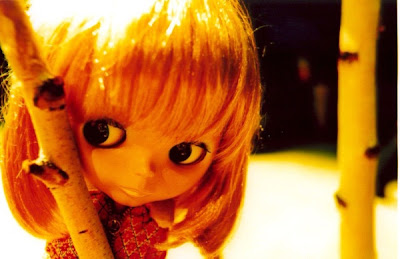ศุกร์นี้ตรงกับวันที่ 13 พอดีเล้ยย
ความเชื่อที่ว่าถ้าวันศุกร์เกิดไปตรงกับวันที่ 13 ของเดือนใดก็ตามแล้ว จะกลายเป็นวันแห่งความโชคร้ายนั้น เป็นความเชื่อที่อยู่ในบรรดาชาติที่พูดภาษาอังกฤษทั่วโลก และยังขยายไปถึงชาติอื่นๆอีกด้วย และในประเทศบางประเทศอย่าง กรีซ สเปน ถือเอาวันอังคารที่ 13 เป็นวันโชคร้ายเช่นกัน สำหรับโรคกลัววันศุกร์ที่ 13 มีชื่อเรียกว่า Paraskavedekatriaphobia หรือ paraskevidekatriaphobia หรือ friggatriskaidekaphobia ซึ่งเป็นอาการหนึ่งของโรค triskaidekaphobia คือ โรคกลัวหมายเลข 13
จุดเริ่มต้นความเชื่อเรื่องศุกร์ 13 นั้น เชื่อมโยงกับความเชื่อที่ว่ามีคน 13 คนร่วมทานอาหารมื้อสุดท้ายกับพระเยซู (The Last Supper) ก่อนที่พระองค์จะถูกนำตัวไปตรึงบนไม้กางเขนในวันศุกร์ประเสริฐ (Good Friday) กระนั้น ไม่มีหลักฐานใดที่บ่งชี้ว่า ประชาชนถือเอาว่าวันศุกร์ที่ 13 เป็นวันโชคร้ายจนเมื่อมาถึงศตวรรษที่ 19 อย่างไรก็ตาม หมายเลข 13 มีประวัติว่ามีความเกี่ยวข้องกับเรื่องโชคร้ายมายาวนาน เนื่องจาก ตามปฏิทินจันทรสุริยคติแล้ว ในบางปีต้องมีเดือน 13 เดือน ขณะที่ตามปฏิทินเกรกอเรียนและปฏิทินของศาสนาอิสลามจะมี 12 เดือนเสมอ
ขณะที่บ้างก็ว่า ความเชื่อนี้มีจุดเริ่มต้นมาจากความเชื่อและตำนานของชาวนอร์สในดินแดนสแกนดิเนเวียที่เรียกว่า Norse myth เกี่ยวกับเทพ 12 องค์ มารวมกันจัดงานเลี้ยงในห้องโถงของเอกีร์ เทพแห่งมหาสมุทร แต่แล้วเทพแห่งไฟที่ชื่อ โลกิ ซึ่งไม่ได้รับเชิญมาร่วมงานจึงพังประตูรั้วเข้ามาร่วมงานในฐานะแขกคนที่ 13 และยังให้เทพฮอดซึ่งเป็นเทพแห่งความมืดมิดซึ่งตาบอดโยนกิ่งของพืชกาฝากใส่ บาลเดอร์ เทพแห่งความสุขและความยินดี จนบาลเดอร์สิ้นลมหายใจไปในทันที ทำให้โลกต้องตกอยู่ในความมืดมิดและความเศร้าสลด
กระนั้น ความเชื่อนี้มีผู้แย้งว่าเป็นไปไม่ได้ เนื่องจากข้อความในบทกวีโลกาเซนนาที่เป็นภาษาโอลด์นอร์สได้มีการกล่าวถึงชื่อเทพ 17 องค์ที่ไปร่วมงานเลี้ยงดังกล่าว ซึ่งระบุว่าเทพโลกิเป็นผู้พังประตูรั้วเข้าไปจริง แต่ว่าเขาไม่ใช่คนที่ 13 และยังไม่มีความเชื่อมโยงระหว่างบทดังกล่าวกับการถึงจุดจบของเทพบาลเดอร์อีกด้วย
ด้วยเหตุนี้ คำอธิบายในข้อแรกจึงดูมีความเชื่อมโยงกับเรื่องความโชคร้ายของเลข 13 ที่เก่าแก่ที่สุดในอังกฤษ ซึ่งมีการบันทึกเอาไว้ในศตวรรษที่ 18 โดยเชื่อกันว่า เมื่อไหร่ก็ตามที่คน 13 คนมานั่งทานอาหารร่วมโต๊ะเดียวกันแล้ว คนที่ลุกจากโต๊ะไปเป็นคนแรกจะเป็นคนแรกที่ต้องตาย
อีกทฤษฏีที่กล่าวถึงวันศุกร์ที่ 13 ระบุว่า วันศุกร์ที่ 13 ตุลาคม 1307 เป็นวันที่พระเจ้าฟิลิปที่ 4 แห่งฝรั่งเศส ทำการจับกุมตัวบรรดาอัศวินเทมพลาร์ชาวฝรั่งเศสจำนวนหลายร้อยคนไป ก่อนจะนำตัวไปทรมานและสังหาร เพื่อนำทรัพย์สินของพวกเขามาเป็นของฝรั่งเศส
ทั้งนี้ เรื่องที่น่าแปลกเกี่ยวกับวันศุกร์ที่ 13 คือ มีหลักฐานที่ยืนยันว่า วันศุกร์ที่ 13 เป็นวันโชคร้ายสำหรับใครบางคนจริงๆ โดยนักจิตวิทยาพบว่า ในบางคนจะมีโอกาสที่จะเกิดอุบัติเหตุหรือล้มป่วยในวันศุกร์ที่ 13 ซึ่งมีการให้เหตุผลเอาไว้ว่าเป็นเพราะบางคนรู้สึกวิตกจริตเป็นอย่างมากในวันศุกร์ที่ 13 โดยทางศูนย์จัดการความเครียดและสถาบันอาบำบัดการกลัวในเมืองแอชวิลล์ มลรัฐนอร์ทแคโรไลนา ประเมินว่าในแต่ละครั้งที่มีวันศุกร์ที่ 13 สหรัฐอเมริกาต้องสูญเสียทางเศรษฐกิจเป็นเงิน 800 900 ล้านเหรียญสหรัฐฯทีเดียว เพราะว่าประชาชนบางคนไม่กล้าเดินทางไปไหนและไม่กล้าแม้แต่จะไปทำงาน


